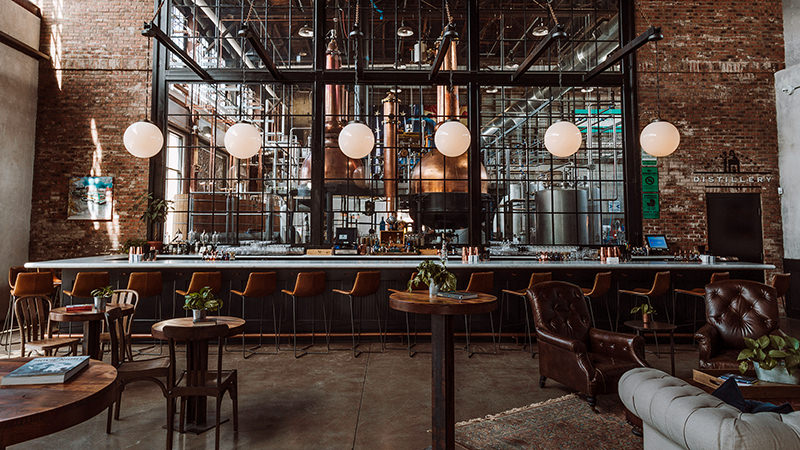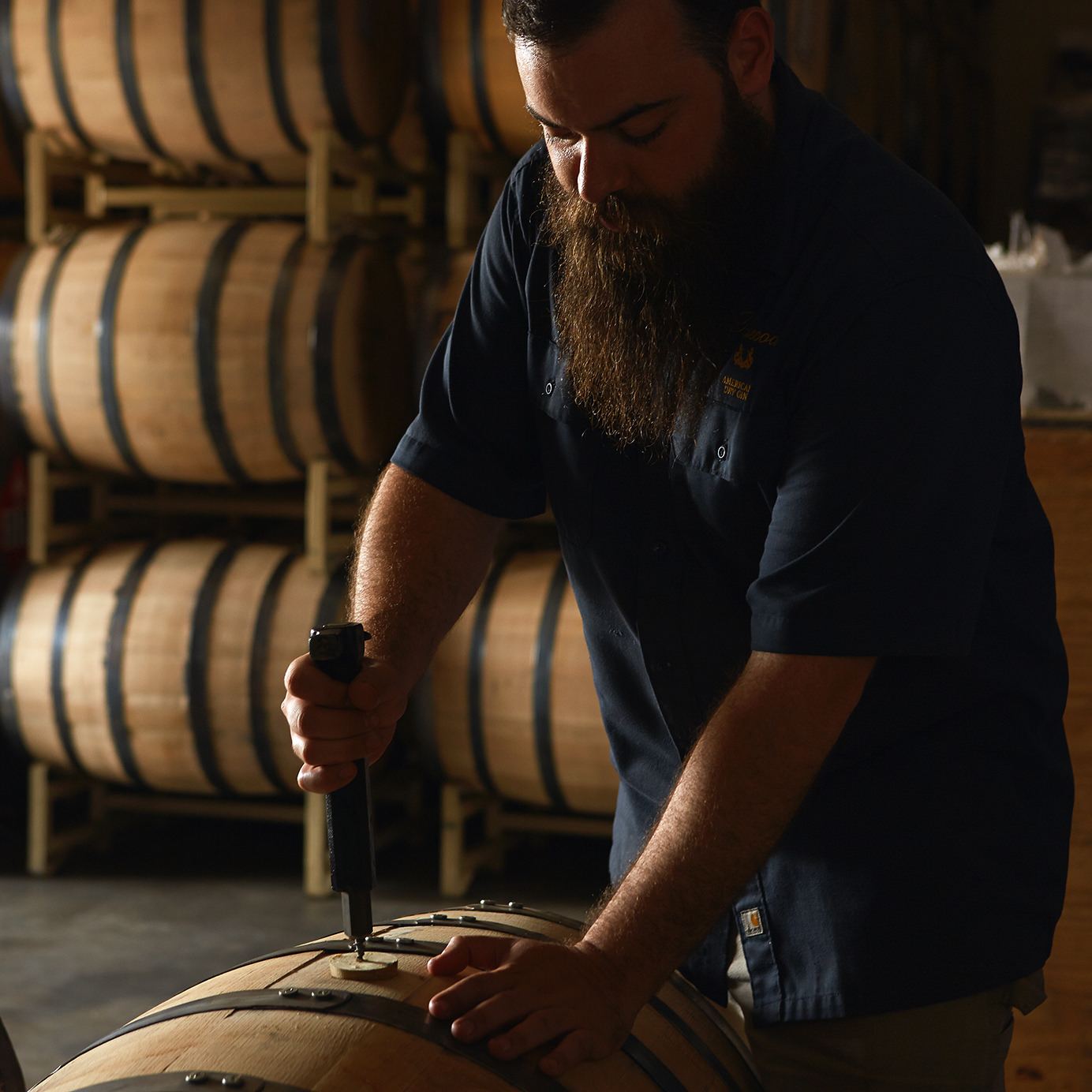If you find the concept of barrel-aged gin a little perplexing, you’re not alone. Just what is one supposed to do with this amber-colored spirit that has all the botanical flavors of gin, plus whiskey-like notes of wood and vanilla? Treat it like bourbon? Use it in place of traditional gin? Sip it neat?
For one, yes, you can absolutely drink it straight. It also works quite well as a cocktail component — though maybe not in a classic gin drink like a Martini.
“Barrel-aged gin works better in classics like the Martinez, but works amazingly in cocktails not typically associated with gin, like the Old Fashioned,” says Damon Boelte, proprietor of Brooklyn’s Grand Army. “It really opens up some new options.”
Alex Smith, managing partner at San Francisco’s temple of gin, Whitechapel, agrees. “A great way to go is to sub an aged gin in a classic whiskey cocktail such as the Old Fashioned or Manhattan,” he says. “Barrel aging a gin gives it many of the classic aged spirit flavors that gin is not usually associated with, such as vanilla, caramel, oak, and smoke. Sometimes, if the barrels have been used to age another spirit or wine beforehand, the gin takes on some of these wonderful flavors.”
The concept of barrel-aging gin isn’t really new; genever, the malt spirit that is a precursor to gin, was often aged in barrels. But it’s an unfamiliar concept for many people, even avid gin drinkers. Small distilleries continue to age their gin, though, and bartenders are having fun introducing people to the pleasures of this wood-kissed, juniper-forward spirit by riffing on classics and coming up with new cocktails.
In general, gin doesn’t have to sit in barrels as long as whiskey to pick up flavors from the wood. Often it’s simply finished in a barrel for a couple of months.
“You don’t get as much of the tannins from the oak,” Aaron Selya, head distiller at Philadelphia Distilling, says. Philadelphia makes Bluecoat Barrel Finished Gin. “Gin has a light body and doesn’t bring too many competing flavors to the table, and so woody nuttiness can really shine through,” Selya says.
Launched in 2005, Bluecoat was the first distillery to open in Philadelphia since Prohibition and is considered part of the American craft distilling renaissance. Its Barrel Finished Gin is aged between three and eight months in 53-gallon new white oak barrels. Selya says the American palate is so tuned in to the flavors of bourbon that the team at Philadelphia Distilling figured a barrel-aged gin would be popular.
Whitechapel dedicates an entire section of its menu to Japanese Highball-style drinks comprised of barrel-aged gin mixed with soda water. Canyon Shayer, head bartender at Philadelphia Distilling, recommends using barrel-aged gin in drinks like the Martinez, Negroni, Bee’s Knees, and London Buck, as well as in drinks like the Manhattan and Old Fashioned.

Here are some barrel-aged gin and genever bottles to try now:
Bluecoat Barrel Finished Gin
Philadelphia Distilling’s Bluecoat Gin is an excellent example of an American dry gin, distilled with Mediterranean juniper berries, coriander, angelica root, and orange, among other botanicals. The gin is then finished in new charred American oak barrels for a minimum of three months, giving the gin an underlying vanilla and caramel flavor that complements its juniper and floral nature.
Barrel Finished Genevieve Gin
This is actually a genever-style gin from Hotaling & Co., the company formerly known as Anchor Distilling. The San Francisco distillery ages its malt-based spirit for two years and nine months in barrels that once held Old Potrero Straight Rye Whiskey, rounding out and adding some sweetness to a fragrant spirit flavored with 12 different botanicals.
Bols Barrel Aged Genever
This Dutch distillery, which has been around for hundreds of years, has several types of genever. In addition to its flagship expression (a mix of grain and neutral spirits) and a 100 percent maltwine genever, there’s a barrel-aged option. This spirit has been aged for 18 months in French Limousin oak barrels, an unusually long time compared with many barrel-aged gins.
Beefeater Burrough’s Reserve
Beefeater London dry gin is an iconic brand that has been used in more Martinis than James Bond could ever have dreamed of drinking (although his go-to brand was Gordon’s). Burrough’s Reserve Edition 2, created by master distiller Desmond Payne, came out in 2016 and was rested for a few weeks in white and red Bordeaux wine barrels. The color is a light peachy pink, and the flavor combines the botanicals of the gin with some nice dry spice notes from the wine barrels.
